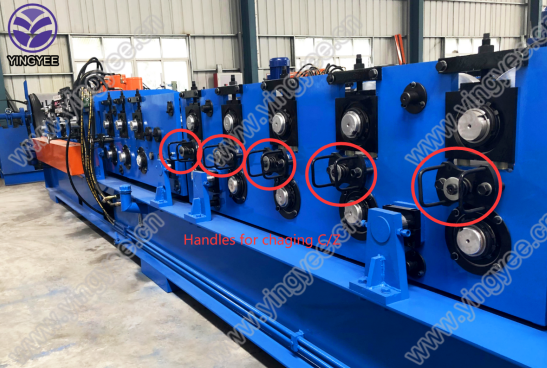
Understanding Gutter Problems with Portable Seamless Rollforming Machines
Portable seamless rollforming machines have significantly revolutionized the manufacturing of gutters and downspouts. While these machines offer the advantage of producing seamless gutters on-site, they are not without their challenges. This article delves into common gutter problems associated with portable seamless rollforming machines and suggests potential solutions for contractors and manufacturers alike.
Common Issues with Gutter Production
1. Material Quality and Selection The quality of materials used in the rollforming process directly impacts the durability and performance of the gutters. Contractors often face issues when using low-grade metals or improperly treated materials that lead to rust and corrosion. It is crucial to source high-quality materials such as aluminum or galvanized steel that are specifically designed for gutter applications.
2. Machine Calibration One of the primary reasons for gutter problems is improper machine calibration. If the machine is not set up accurately, the resulting gutters can have inconsistent widths or shapes. This can lead to uneven water flow and increased risk of overflow. Regular maintenance and thorough calibration checks are essential before each use. Operators should become familiar with the manufacturer’s specifications and adhere to them diligently.
3. Joint Integrity Seamless gutters are designed to minimize leaks by eliminating joints and seams. However, issues can still arise if the machine does not form the gutters accurately. Even small discrepancies at the ends of the gutters can create gaps that compromise the system’s integrity. To mitigate this, operators should ensure that the rollforming machine is correctly aligned and that the end fittings match perfectly with the gutters produced.
4. Installation Errors Even with the best machines and high-quality materials, installation mistakes can lead to gutter problems. Improper slope, inadequate fastening, or oversights such as failing to account for expansion and contraction can all result in poor performance. Contractors should be well-trained in installation techniques and follow best practices to ensure that the gutters function as intended.
5. Environmental Impact The impact of environmental elements cannot be ignored. A poorly installed or maintained gutter system may not withstand heavy rain, snow, or ice. This exposure can lead to blockages from debris buildup, causing water to overflow and damage the roof and foundation. It is vital to conduct regular inspections and ensure that the gutter systems are designed to handle local weather conditions.
Solutions and Best Practices

To reduce gutter problems associated with portable seamless rollforming machines, consider the following best practices
- Choose High-Quality Materials Always invest in high-quality materials that are resistant to the elements and specifically designed for gutters.
- Regular Machine Maintenance Establish a comprehensive maintenance schedule for rollforming machines, including routine calibration and inspection.
- Training and Education Ensure that all operators receive proper training on the machine's operation and gutter installation techniques.
- Thorough Inspection Conduct regular inspections of installed gutter systems to identify wear, corrosion, or issues like clogged downspouts early.
- Adaptation to Weather Conditions Local climate considerations should be an integral part of the design and installation process to ensure gutters can handle expected precipitation and snow loads.
Conclusion
While portable seamless rollforming machines offer significant advantages in gutter manufacturing, challenges such as material quality, machine calibration, joint integrity, installation errors, and environmental factors can complicate the process. By implementing best practices in machine maintenance, operator training, and regular inspection, contractors can mitigate many of these issues, ensuring that the seamless gutters installed not only look good but also perform reliably over time. This proactive approach can lead to long-term customer satisfaction and fewer costly repairs in the future, demonstrating the importance of quality both in the manufacturing process and the final installation.